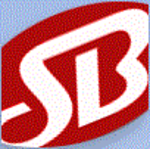Description

ChurchSuite

Tabernacle
Comprehensive Overview: ChurchSuite vs Tabernacle
ChurchSuite and Tabernacle are two software solutions designed for managing church activities, though they each have unique features and target audiences.
a) Primary Functions and Target Markets
ChurchSuite
Primary Functions:
- Membership Management: Handles member information, with tools for communication and engagement.
- Event Management: Facilitates event planning, including booking, communication, and volunteer coordination.
- Service Planning: Creates and manages church services with scheduling tools.
- Communication Tools: Email and SMS capabilities for keeping in touch with congregants.
- Giving and Donations: Enables online giving and tracks donations for financial transparency.
- Child Check-In: Streamlines the process of checking children into church programs.
- Rotas: Simplifies volunteer scheduling and management.
- Small Groups Management: Supports creating, managing, and evaluating small group activities.
Target Market:
- Churches of varying sizes looking for a comprehensive church management software that offers a broad range of tools for day-to-day management and communication.
Tabernacle
Primary Functions:
- Worship Planning: Focused tools for designing and managing worship services.
- Member Management: Basic features for managing church member information.
- Event Scheduling: Coordinates church events and meetings.
- Communication Features: Includes options for newsletters and individual communications.
- Donation Tracking: Manages tithing and other contributions.
- Volunteer Management: Helps in scheduling and managing church volunteers.
Target Market:
- Tabernacle is often utilized by smaller to midsize churches looking for a straightforward worship-focused management solution with essential membership and communication tools.
b) Market Share and User Base
ChurchSuite:
- Market Share: ChurchSuite has a notable presence, especially in the UK and Europe, due to its comprehensive features and robust support.
- User Base: It is popular among medium to large churches due to its expansive feature set, which is scalable and can efficiently manage larger congregations.
Tabernacle:
- Market Share: Tabernacle holds a smaller market share globally, with a focus on regions or communities where churches prefer simpler or more cost-effective solutions.
- User Base: Generally appeals to smaller churches that prioritize ease of use and cost-efficiency over the extensive functionality offered by larger platforms.
c) Key Differentiating Factors
-
Feature Set:
- ChurchSuite offers a more expansive suite of tools tailored for managing large congregations, intricate event planning, and detailed communication pathways.
- Tabernacle, while also robust, tends to focus its strengths more on worship and essential member management functions.
-
User Experience:
- ChurchSuite tends to cater to tech-savvy users who appreciate the depth and breadth of features available.
- Tabernacle offers a more streamlined interface that is easier for less tech-oriented users to navigate.
-
Scalability:
- ChurchSuite supports large-scale church operations with a complex structural setup.
- Tabernacle is optimal for smaller, community-focused churches with less need for scalability.
-
Pricing:
- ChurchSuite typically operates on a tiered pricing model, aligning with the breadth of its features.
- Tabernacle may offer a more affordable or fixed pricing strategy, appealing to smaller budgets.
-
Regional Focus:
- ChurchSuite has a stronger European presence, aligning with user needs and regional practices.
- Tabernacle may have a more diverse or localized focus depending on its user community and specific needs.
In sum, while both ChurchSuite and Tabernacle provide valuable tools for church management, ChurchSuite is more feature-rich and suited for larger operations, whereas Tabernacle is simpler and potentially more cost-effective, particularly appealing to smaller churches.
Contact Info

Year founded :
2012
+44 74 4933 5548
Not Available
United Kingdom
http://www.linkedin.com/company/churchsuite

Year founded :
2022
Not Available
Not Available
India
Not Available
Feature Similarity Breakdown: ChurchSuite, Tabernacle
As of my last update in October 2023, both ChurchSuite and Tabernacle are church management software platforms that provide numerous features to support the administrative and operational needs of churches. Below, I provide a general feature similarity breakdown based on typical functionalities of such products at that time. For the most accurate and current comparison, consulting their official websites or contacting their sales teams would be advisable.
a) Core Features in Common
-
Membership Management: Both platforms offer sophisticated tools for managing member information, including contact details, engagement history, and family connections.
-
Event Management: They both provide scheduling tools for organizing events, services, and group meetings with options for RSVPs and managing attendance.
-
Volunteer Coordination: Tools for scheduling and managing volunteer teams are present, allowing users to assign roles and track participation.
-
Communication Tools: Email and SMS broadcasting capabilities are typically available to facilitate communication within the church community.
-
Child Check-In: Both platforms often include secure checking-in systems for managing children’s ministry environments.
-
Reporting and Analytics: Each platform has reporting tools that offer insights into various aspects of church operations and member engagement.
-
Donation and Financial Management: They both support donation tracking, financial reporting, and integration with accounting platforms.
b) User Interface Comparison
-
ChurchSuite: Known for a clean and user-friendly interface, ChurchSuite focuses on intuitive design with an emphasis on ease of navigation. Its layout often features customizable dashboards and offers mobile app functionality to support on-the-go access for church staff and members.
-
Tabernacle: Typically, Tabernacle also strives for a user-friendly experience, though its design might prioritize different aesthetic or functional elements to align with its brand philosophy. It might also include mobile features but can differ in customization options and visual hierarchy.
c) Unique Features
-
ChurchSuite:
- Rotas: Offers specific rota management capabilities for organizing people serving in various roles at events and services.
- Integration: ChurchSuite is known to offer a wide range of integrations with other software tools churches might be using, enhancing its functionality through a connected ecosystem.
-
Tabernacle:
- Customized Workflows: Perhaps offers more personalized workflows or unique ministry-specific processes that differentiate how tasks are organized.
- Emphasis on Community Engagement: Might provide distinctive features that focus on community building and engagement, such as small group management or interactive member directories.
Conclusion
Both ChurchSuite and Tabernacle offer robust solutions with considerable overlap in core functionalities essential for church management. The differences mainly lie in user interface preferences, unique features that cater to specific church needs, and possibly pricing and support structures. Evaluating these platforms based on specific church requirements, and perhaps engaging in free trials or demos, would be the most effective way to discern the best fit.
Features

Membership Management
Giving and Fundraising
Child Check-In
Event Planning
Event Management
Member Database
Donation Management
Communications
Volunteer Coordination

Collaboration Tools
User Management
Project Management
Data Analytics
Integration Options
Best Fit Use Cases: ChurchSuite, Tabernacle
ChurchSuite and Tabernacle are both software solutions that cater primarily to faith-based organizations, focusing on church management. However, they each have distinct features and strengths that make them better suited for specific use cases.
a) ChurchSuite
Best Fit Use Cases:
-
Church Communities of Varying Sizes: ChurchSuite is ideal for churches ranging from small community congregations to larger ones. Its scalability ensures that it can grow with the organization.
-
Comprehensive Church Management: It provides a holistic set of tools for managing church operations, including administration, event management, membership tracking, and communication.
-
Youth and Children’s Ministry: With modules specifically designed for managing young congregants, such as attendance tracking and activity scheduling, ChurchSuite supports dedicated ministries within the church.
-
Data-Driven Decision Making: Churches that focus on data analytics and reporting will benefit from ChurchSuite’s robust reporting features, which help in making informed decisions.
-
Event-Heavy Churches: Organizations that host frequent events, whether large conferences or small group gatherings, will find ChurchSuite’s event management tools extremely useful.
b) Tabernacle
Preferred Use Cases:
-
Startups and Small Churches: Tabernacle might be more cost-effective and straightforward, making it a preferred option for smaller churches or ones that are just starting to build their administrative infrastructure.
-
Simplified Administration Needs: For churches looking for essential features without the complexity, Tabernacle offers streamlined solutions that cover key functionalities without overwhelming features.
-
Online and Hybrid Churches: Tabernacle may have specific strengths in supporting churches that operate primarily online or in a hybrid format, with tools tailored for virtual engagement.
-
Technology-Adverse Congregations: For congregations or staff not as comfortable with technology, Tabernacle’s potentially more intuitive and less feature-dense platform might reduce the learning curve.
d) Catering to Different Industry Verticals or Company Sizes
-
Industry Verticals: Both ChurchSuite and Tabernacle are designed mainly for religious organizations, specifically focusing on church management. They serve various denominational needs with customizable features that appeal to a broad spectrum of faith-based institutions.
-
Company Sizes:
- ChurchSuite: More versatile for larger or growing churches needing comprehensive management solutions that can handle complexity and scale without performance issues.
- Tabernacle: Better suited for smaller organizations or new churches needing essential functionalities without a substantial investment in resources or training.
Both platforms enable churches to streamline operations and enhance congregant engagement, but the choice between them depends on the organization’s specific needs, size, and technological preferences.
Pricing

Pricing Not Available

Pricing Not Available
Metrics History
Metrics History
Comparing undefined across companies
Conclusion & Final Verdict: ChurchSuite vs Tabernacle
Conclusion and Final Verdict for ChurchSuite vs Tabernacle
When evaluating church management software, both ChurchSuite and Tabernacle offer a range of features designed to help religious organizations manage their operations efficiently. The choice between the two depends on specific needs, budget constraints, and feature preferences of the organization.
a) Best Overall Value
ChurchSuite generally offers the best overall value for organizations seeking a comprehensive and user-friendly platform. It provides a wide array of features, including event management, member database, donor tracking, and communications, which are robust and well-integrated. The scalability of ChurchSuite makes it suitable for both small and large organizations, often justifying its pricing with the breadth of features and ease of use.
b) Pros and Cons
ChurchSuite
-
Pros:
- Comprehensive feature set with modules for events, members, and finances.
- User-friendly interface making it accessible even for non-tech savvy users.
- Active customer support and regular feature updates.
- Strong focus on data security and user privacy.
-
Cons:
- Pricing may be prohibitive for very small congregations with limited budgets.
- Advanced customization options may be limited compared to some other platforms.
Tabernacle
-
Pros:
- Competitive pricing which may be more appealing for smaller organizations or those with tight budgets.
- Offers essential features necessary for basic church management.
- Simple and straightforward interface, suitable for users who need basic functionalities.
-
Cons:
- Limited feature set compared to ChurchSuite, which may not suffice for larger, more complex organizations.
- Less frequent updates and potentially less responsive customer support.
- May lack advanced integrations with third-party software.
c) Specific Recommendations
-
For Large or Growing Organizations: ChurchSuite is recommended due to its comprehensive features, scalability, and ability to efficiently manage complex church operations.
-
For Small or Budget-Conscious Organizations: Tabernacle might be a suitable choice if the focus is primarily on cost-effectiveness and if basic features meet the organization’s requirements.
-
Feature Requirement Consideration: If an organization foresees the need for advanced features such as in-depth reporting, event management, and integration capabilities, ChurchSuite would likely be more advantageous.
Ultimately, both products have their merits, and the decision should be based on an organization’s specific needs, size, and budget. It may be worthwhile for users to explore trial versions or conduct side-by-side comparisons of workflow scenarios to determine which software aligns best with their organizational goals.
Add to compare
Add similar companies



